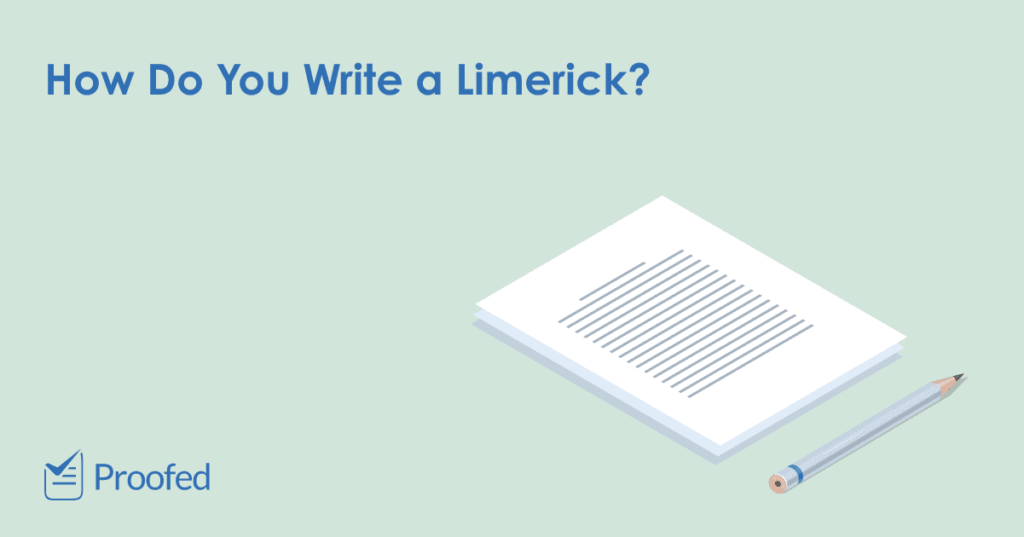National Limerick Day, held on the 12th of May every year, was set up to celebrate the birth of Edward Lear, the poet who popularised limericks with his 1846 collection The Book of Nonsense. But what are limericks exactly? And how do you write a limerick? Let’s take a look!
What Are Limericks?
A limerick is a humorous – and sometimes ribald – five-line poem. The first, second, and fifth lines should rhyme with one another, while the third and fourth lines are shorter and rhyme together. For example:
There was an Old Man with a beard,
Who said, ‘It is just as I feared!—
Two Owls and a Hen,
Four Larks and a Wren,
Have all built their nests in my beard!’
This is one of Edward Lear’s famous limericks. Lear tended to repeat a word from earlier in the poem for the last line, but you can use another rhyming word, such as in this one by Spike Milligan:
A man called Percival Lee
Got up one night for a pee.
When he got to the loo
It was quarter-to-two,
And when he got back it was three.
As you can probably tell by now, limericks are often quite silly!
3 Tips on How to Write a Limerick
So, how do you write a limerick? Check out our top three tips below.
1. Use the AABBA Rhyme Scheme
As mentioned above, all limericks follow an AABBA rhyme scheme in which:
- The 1st, 2nd, and 5th lines rhyme with each other (A).
- The 3rd and 4th lines rhyme with each other but not the other lines (B).
We can see the rhyme scheme more clearly if we label it below:
There was an odd fellow named Gus, (A)
When travelling he made such a fuss. (A)
He was banned from the train, (B)
Not allowed on a plane, (B)
And now travels only by bus. (A)
As you can see, all the (A) lines above rhyme (Gus, fuss, bus). But the (B) lines only rhyme with one another (train, plane).
Find this useful?
Subscribe to our newsletter and get writing tips from our editors straight to your inbox.
2. Line Length
As a rule, the lines in a limerick should be a certain length:
- The 1st, 2nd, and 5th lines should be around 7 to 9 syllables.
- The 3rd and 4th lines should be slightly shorter (5 to 7 syllables).
This can vary a little, though. The most important thing is that the rhyming lines include the same number of syllables as one another.
3. Rhythm and Metre
Limericks also follow a particular pattern:
- The 1st, 2nd, and 5th lines should contain three stressed syllables.
- The 3rd and 4th lines should contain two stressed syllables.
To illustrate this, we’ll highlight the stressed syllables in the limerick above:
There was an odd fellow named Gus,
When travelling he made such a fuss.
He was banned from the train,
Not allowed on a plane,
And now travels only by bus.
This pattern gives a limerick its ‘da DUM da da DUM da da DUM’ rhythm!
A Proofreading Limerick
And to finish this blog post, we’ve written a limerick about proofreading:
There was a young woman called Frida
Who wanted to be a proofreader
So she learned punctuation
On her summer vacation
And now she’s an industry leader!
Speaking of industry leading proofreading services, if you ever need anyone to help you ensure a document (or even a collection of limericks) is error free, we have expert editors available 24/7. Why not submit a sample document today and see how we could help?



